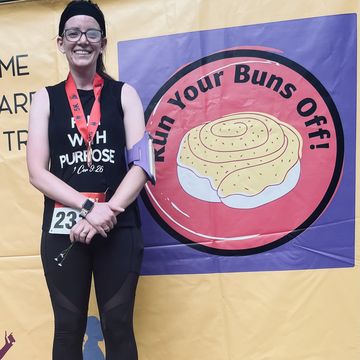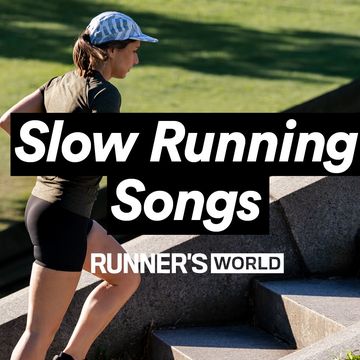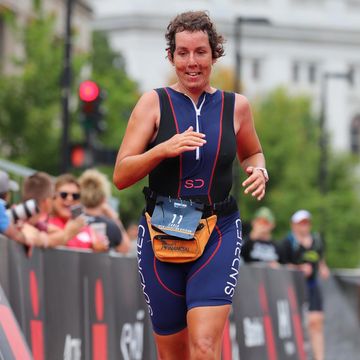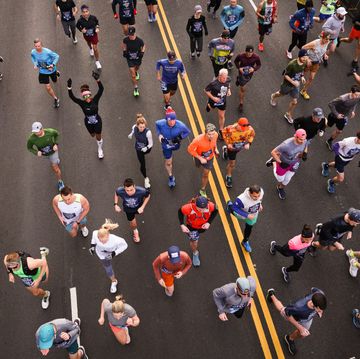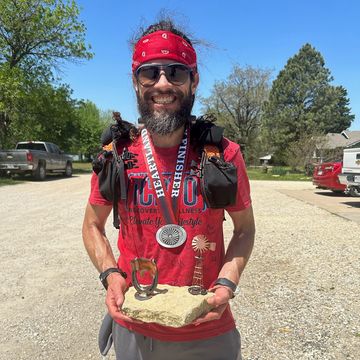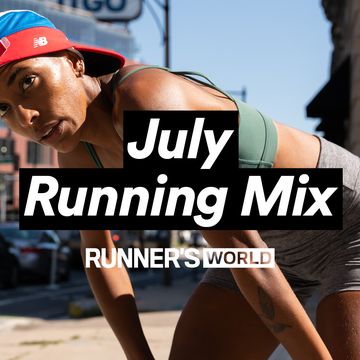Runners are the most common kind of athlete in the world—there are hundreds of millions of us. But every runner, every run, is different. It’s your run—run it your way. In this interview series, Runner’s World and Brooks explore the weird, wild, crazy, important, creative, silly things that individual runners do on their run. Here we speak to Kit John, founder of Movement Runners, a nonprofit that organizes community runs around Los Angeles.
Runner’s World: What are four words that describe you?
Kit John: Father, runner, leader, and jack of many trades. I do many things. I’m a personal trainer. I print shirts. I practice photography. I didn’t plan on my life being so spread out, but I really just don’t like to wait for people. That’s usually how it starts: I end up trying something because someone else is taking too long, I realize I’m enjoying myself, and I stick with it. Anybody who knows me knows that there’s never just one specific thing that I’m doing.
RW: What does a typical day look like for you?
John: It’s funny that you ask: It is legit all over the place. I spend the mornings training clients until about 9 a.m. Then I return home for breakfast, and from there…who knows! It could be printing shirts, cutting hair, or taking headshots for a client. In the evenings, I host community runs in different neighborhoods in LA. There’s a run almost every day of the week.
RW: Is South Central your base, and then you hit some of those neighborhoods around it?
John: Yes, South Central is our home base. Monday is usually Culver City. Tuesday, it’s Playa Vista. Wednesday, I host a workout in my backyard. Thursday is Venice. Friday, we’re off. Saturdays are a wild card because we switch around the locations. And then Sundays, we’re in Inglewood.
RW: How do you approach long runs?
John: I’m always thinking about having fun when I’m running. But for that to happen, I have to mix up my routes. I get really bored of running the same route over and over. When I’m running, I’m like, “Wow, I’ve never run over here before.” I think I’ve run almost everywhere in Los Angeles. I love going to new cities, new countries to run, because everything is fresh. I’m really paying attention to the stores and the streets.
I never want to get too deep in my head. I want to zone out, but I want to go somewhere. I think that’s how I’d define “runner’s high”—when you zone out, you just forget that you’re running, you forget about the pace. Now, if you’re running with a group, of course, you’re talking to the person, you’re getting to know that person. But even then, it’s still possible to hit that runner’s high through a good conversation.
RW: Do you ever use your long runs to solve problems or process complicated emotions?
John: No, definitely not. When I’m running, don’t bother me. I don’t let myself bother me. This is my time right now—unless I’m running with somebody. But other than that, I get into a zone where problems can’t touch me. As soon as I’m done, it’s back to reality. Until the run’s over though, I want peace.
RW: As a runner, have you ever seen your running as self-care?
John: In the beginning, I didn’t see it as self-care, because my runners were looking to me to host runs so they could come for their personal self-care. It was an important role, and I enjoyed it, but it was never particularly about my own well-being. When [the COVID pandemic] happened, I thought to myself, “Oh, wow, I actually get to take a break.” But that only lasted two weeks. The third week, I was itching. Something was not right. I ran on my own. It wasn’t the same. We eventually started meeting in smaller groups—maybe four or five people, and then five becomes six becomes seven becomes eight, etc.
That’s when I realized how important running was for my mental health. I needed to be out there. And I needed to be with people. I’d thought I was just running because that’s what my crew wanted, but being with them was more than that. It was self-care. When I run now, I’m at peace.
RW: You mentioned one of the ways you have fun on a run is to change up your route. Do you also do that with your groups?
John: Definitely, I never pick out a route when I host my runs. If you have a route, you have a plan. I don’t like plans because things change. When I was younger, I was the opposite—things had to be planned to a T. But now I believe that things happen the way they’re supposed to happen, and you’ve got to go with it. That’s how I host my runs. Every time we get to a traffic light, everybody asks: “Where are we going?” And I say, “I don’t know.” It sounds funny but it’s not a joke. I legit don’t know. But whenever that light changes, we’re definitely going somewhere.
The second, more practical reason I don’t plan my runs is because I would end up running with people so ridiculously fast that they’d just take off and leave the others behind. I like to keep everybody together. So that’s another reason nobody knows the route. I don’t even know the route.
RW: It sounds like, in some ways, running has changed the way that you interact with your neighborhoods and the spaces around you.
John: My relationship with my neighborhood has changed so much since I started running. In those early days, I’d use an app that challenged me and others to log the most miles in a week. One day, I woke up at five in the morning so that I could get a head start on this challenge. I got up, I put my shoes on, I’m ready. It’s cold and dark outside. My dad was wide awake. “Where are you going?” he asked. I told him I was leaving for a run. His response? “No, you’re not.” Now mind you, I’m a grown man.
He explained, “Where we live, people are either going to think that you’re running from something or running to something.” That hurt, but he was right.
It took a couple years to become comfortable running in my own neighborhood. But I feel like we’ve changed the narrative on that. There are many runners that run in our neighborhood because of me. I’m not bragging, but I’m proud of that. Things are different now. And I feel like I played an important role in the change.
You still have to be mindful of where you’re at. I feel like no matter where you are, you should be mindful—not just South Central. Of course we hear the horror stories about things happening, but we just have to be mindful.
RW: Was your father a runner?
John: He was, yeah. He passed away about three years ago. My father was very active. He played soccer. He ran. He was the type that just stayed active. When I was about 8 years old, my father used to do laps around the high school track we lived near while I rode my bike. I remember thinking: “How is he running this much?” and “I would never be a runner. He’s crazy.” But now look at what’s happened!
My father taught me that the moment you stop moving is the moment your body shuts down. Movement is very necessary to the body. Whether it’s running, whether it’s swimming, just getting up for a walk, movement is needed for the body to function properly.
RW: How did you eventually become a runner?
John: Ten years ago, my training was very different. I was working out in the gym trying to put on muscle mass. A friend of mine who wanted to start getting active asked me to go on a group run with her. I told her: “Girl, I am not trying to run. I’m trying to get these gains, I’m trying to put on muscle mass, and running will slow my progress down.” But she convinced me to go with her.
The name of the run club was Mission, I’m Possible and it was in Echo Park. I remember everything. There were about 20 people—all a lot younger than me. When the run started, I tried to keep pace—and I did!—but I was dying. They were very motivating. They cheered my name like they’d known me for 20 years. It was amazing.
I came back another Saturday. Then I came back on Sunday. I couldn’t stay away. When the group ran a San Francisco half-marathon, I decided to join them. We had matching outfits—shirts, pants, shoes—and wore black and white hats. We were all decked out, it was like a fashion show. It was a great vibe.
I paced for a couple of miles when we got there. One mile turned into three miles, three miles turned to five miles. I had never run this many miles in my life, and at mile 10, I decided that I might as well try for the full 13.1 miles.
We crossed the finish line all together holding hands. These people genuinely waited for everybody to finish. They didn’t care about the time. And that changed something for me.
That’s when I realized some people run races for pace, some for speed, but some people run races to inspire others to run their own race. I wanted to be in that third group.
RW: How did that experience influence what you do today?
John: I came back to LA and immediately started gathering my own group of runners together. And here we are. That’s what got me doing what I do with Movement Runners.
Since then it’s been nonstop. I’ve been running for the past 10 years and doing races, showing people that they can run races. They’ll tell me I’m crazy, and then they run their first 5K and they realize they can do anything they put their mind to.

Carey Rossi is the Senior News Editor for Prevention and Prevention.com. You can follow her @CareyRossi.












